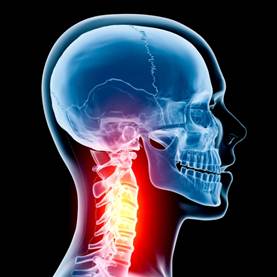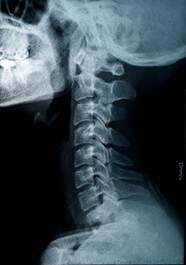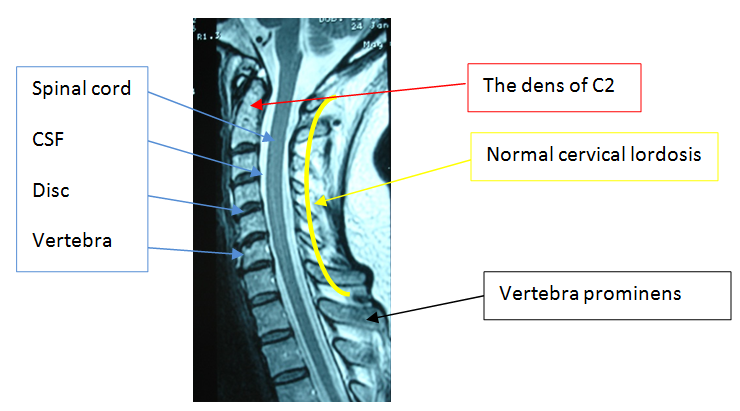
The cervical spine (neck) is made up of seven vertebrae with discs in between, C1 – 7. The bony column is surprisingly near the front. Behind this spinal column lies the spinal cord. The cervical spine directly supports the head and rises from the shoulders in a somewhat vulnerable way. The bodies of the cervical vertebrae are smaller but the vertebral foramina are the largest in the spine to allow for the cervical enlargement of the spinal cord. Most of the spinous processes are bifid – split into 2 parts.
As you have read the first two cervical vertebrae differ considerably from the others. C1 – the atlas – is the uppermost vertebra and supports the head. C1 is just a ring of bone. It has no vertebral body or spinal process and articulates with the head allowing us to ‘nod the head’. The second cervical vertebra, C2, is called the axis. It does contain a vertebral body and also contains a peg-like process called the dens which projects up and articulates with the atlas so there is no intervertebral disc between C1 and C2. The dens makes a pivot on which the atlas and the head rotate, as in moving the head to signify ‘no’. The lower cervical spine, C3 – C7, share a more similar pattern. However, C7, or sometimes the one below, is called the vertebra prominens as it has a large spinous process – you can feel it at the base of your neck.
The neck, when viewed to the side, has a curve – it is convex and bulges out to the front. This is called the cervical lordosis and is the normal curve of the cervical spine. It develops after we are born, when an infant begins to hold its head up right.
A Lateral X-Ray of the Cervical Spine

An MRI Scan of the Cervical Spine
